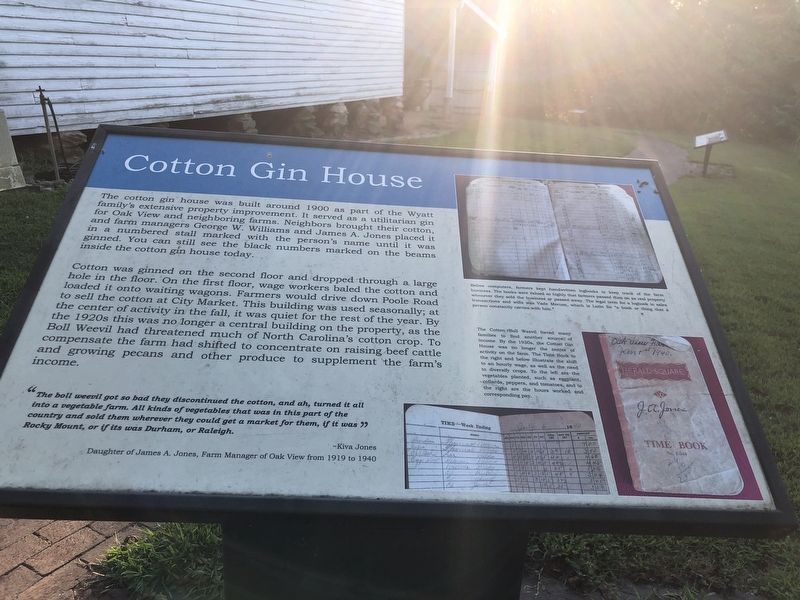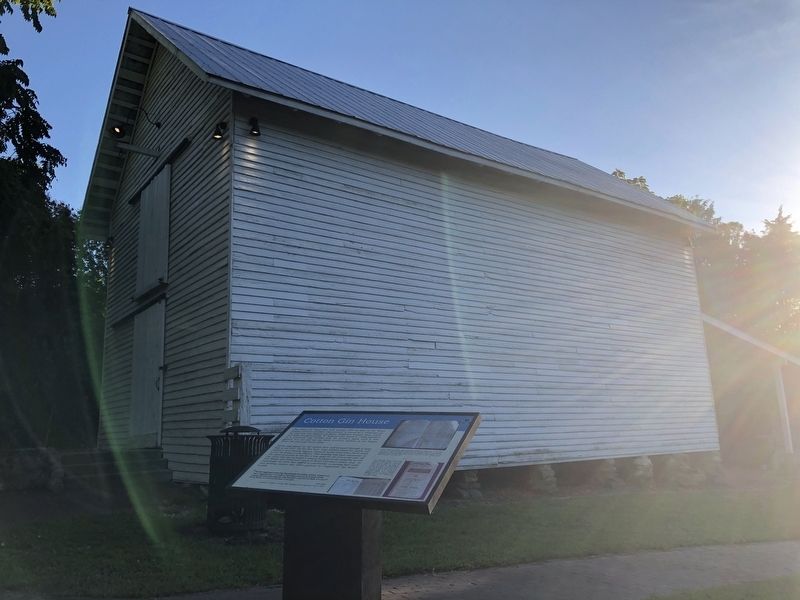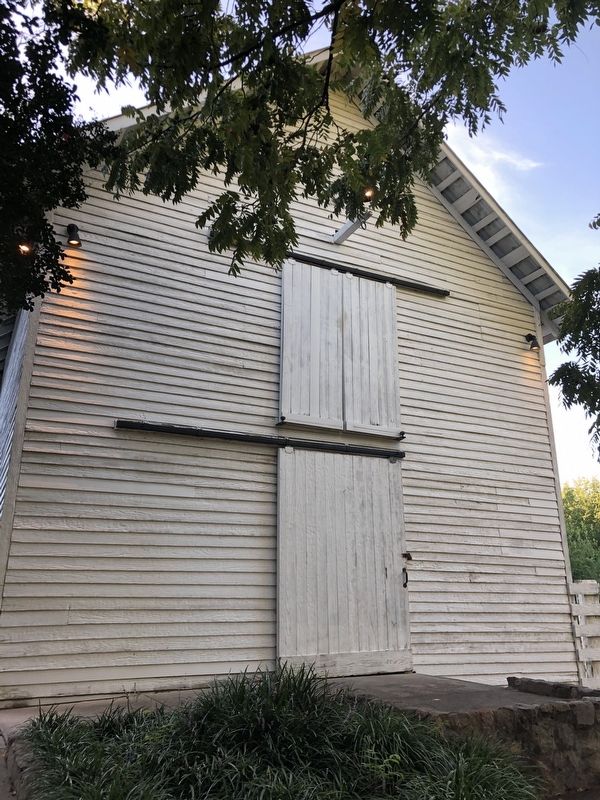Southeast Raleigh in Wake County, North Carolina — The American South (South Atlantic)
Cotton Gin House
Cotton was ginned on the second floor and dropped through a large hole in the floor. On the first floor, wage workers baled the cotton and loaded it onto waiting wagons. Farmers would drive down Poole Road to sell the cotton at City Market. This building was used seasonally; at the center of activity in the fall, it was quiet for the rest of the year. By the 1920s this was no longer a central building on the property, as the Boll Weevil had threatened much of North Carolina's cotton crop. To compensate the farm had shifted to concentrate on raising beef cattle and growing pecans and other produce to supplement the farm's income.
“The boll weevil got so bad they discontinued the cotton, and ah, turned it all into a vegetable farm. All kinds of vegetables that was in this part of the country and sold them wherever they could get a market for them, if it was Rocky Mount, or if its was Durham, or Raleigh.” – Kiva Jones, Daughter of James A. Jones, Farm Manager of Oak View from 1919 to 1940
[Captions]
• Top: Before computers, farmers kept handwritten logbooks to keep track of the farm business. The books were valued so highly that farmers passed them on as real property whenever they sold the business or passed away. The legal term for a logbook in sales transactions and wills was Vade Mecum, which is Latin for “a book or thing that a person constantly carries with him.”
• Bottom: The Cotton Boll Weevil forced many families to find another source of income. By the 1930s, the Cotton Gin House was no longer the center of activity on the farm. The Time Book to the right and below illustrate the shift to an hourly wage, as well as the need to diversify crops. To the left are the vegetables planted, such as eggplant, collards, peppers, and tomatoes, and to the right are the hours worked and corresponding pay.
Topics. This historical marker is listed in this topic list: Agriculture. A significant historical year for this entry is 1900.
Location. 35° 46.238′ N, 78° 34.375′ W. Marker is in Raleigh, North Carolina, in Wake County. It is in Southeast Raleigh. Marker can be reached from the intersection of Historic Oak View Lane and Carya Drive. Marker is in Historic Oak View County Park. Touch for map. Marker is at or near this postal address: 4028 Carya Dr, Raleigh NC 27610, United States of America. Touch for directions.
Other nearby markers. At least 8 other markers are within walking distance of this marker. In the Field (a few steps from this marker); I-440 (within shouting distance of this marker); Plank Kitchen (within shouting distance of this marker); Livestock Barn (about 300 feet away, measured in a direct line); Farm House (about 300 feet away); Carriage House (about 300 feet away); The Pecan Grove (about 400 feet away); Tenant House (about 500 feet away). Touch for a list and map of all markers in Raleigh.
Also see . . . Historic Oak View Historic & Natural Significance. Further information about the park's structures and Oak View's history, which dates back to 1829 when Benton Southworth Donaldson Williams purchased a tract of land in eastern Wake County from Arthur Pool for $135. (Wake County Parks, Recreation and Open Space Division) (Submitted on September 29, 2023, by Duane and Tracy Marsteller of Murfreesboro, Tennessee.)
Credits. This page was last revised on September 29, 2023. It was originally submitted on September 28, 2023, by Duane and Tracy Marsteller of Murfreesboro, Tennessee. This page has been viewed 64 times since then and 19 times this year. Photos: 1, 2, 3. submitted on September 28, 2023, by Duane and Tracy Marsteller of Murfreesboro, Tennessee.


